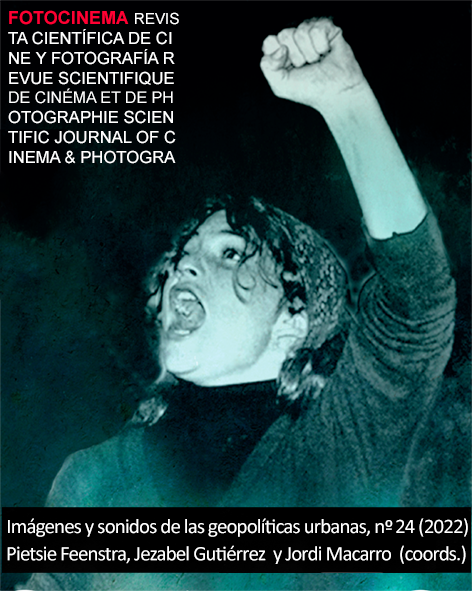Relajo y humor carnavalesco como sátira política en Un mundo maravilloso (Estrada, 2006)
DOI:
https://doi.org/10.24310/Fotocinema.2022.vi24.13776Keywords:
Humor, grotesque, Mexican cinema, necropolitics, discursive analysisAbstract
This study investigates the rebellious potentiality of the carnival grotesque (Bajtin, 1974) from the figures of “relajo” and “pelado”, two fundamental concepts of the Mexican cinematographic imaginary. For this, the film by the filmmaker Luis Estrada A wonderful world ( 2006), which together with Herod's Law (1999), Hell (2010) and The Perfect Dictatorship (2014) can be considered a tetralogy about the current sociopolitical situation in Mexico, share themes, a critical and satirical perspective to portray social history and recent politics in Mexico, denouncing the murky relationships between political corruption, organized crime, large economic corporations, and the media. It is finally verified how through grotesque Mexican humor, the ambivalence of laughter, parody, and carnival investment, the mechanisms of oppression in the establishment and maintenance of inequality between social classes are revealed and the distribution of wealth.
Downloads
Metrics
References
Bartra, R. (2000). La jaula de la Melancolía. Identidad y metamorfosis del mexicano. Ciudad de México: Grijalbo.
Bourdieu, P. (1998). La dominación masculina. Madrid: Anagrama.
Connelly, F. S. (2015). Lo grotesco en el arte y la cultura occidentales. Madrid: A. Machado.
Connelly, F. S. (ed.) (2017). Grotesco y arte moderno. Madrid: A. Machado.
Cortina, A. (1997). Ciudadanos del mundo. Hacia una teoría de la ciudadanía, Madrid: Alianza.
Cortina, A. (2000). Aporofobia. El País, 7 de marzo, p. 14.
Gutiérrez, O.S. (2011). La construcción del imaginario sobre la pobreza en el cine mexicano. Cultura y representaciones sociales. Revista UNAM. Vol 6, N.11.
Koestler, A. (2002). “El humor como acto cognitivo” (El acto de creación: Libro I: El bufón). CIC Cuadernos de Información y Comunicación 7, pp. 317-327.
Monsiváis, C. (2000). Aires de familia. Barcelona: Anagrama.
Monsiváis, C. (2006). El nuevo darwinismo: ‘El hombre desciende de la caricatura. Ciudad de México: Confabulario, suplemento cultural El Universal.
Portilla, J. (1966). La fenomenología del relajo y otros ensayos. México, Fondo de Cultura Económica. (2000)
Rosaldo, R. (1989). Culture and Truth: The remaking of Social Analysis, Boston: Beacon Press.
Sánchez, C. (2012). The Suspension of Seriousness. On the Phenomenology of Jorge Portilla. Albany: SUNY.
Valencia, S. (2010). Capitalismo gore. Barcelona: Melusina.
Downloads
Published
How to Cite
Issue
Section
License
All contents published in Fotocinema Revista científica de cine y fotografía are protected under the Creative Commons Attribution-NonCommercial-ShareAlike 4.0 International (CC BY-NC-SA 4.0) license. All about this license is available in the following link: <http://creativecommons.org/licenses/by-nc-sa/4.0>
Users can copy, use, redistribute, share and exhibit publicly as long as:
- The original source and authorship of the material are cited (Journal, Publisher and URL of the work).
- It is not used for comercial purposes.
- The existence of the license and its especifications are mentioned.
There are two sets of authors’ rights: moral and property rights. Moral rights are perpetual prerogatives, unrenounceable, not-transferable, unalienable, imprescriptible and inembargable. According to authors’ rights legislation, Fotocinema. Revista científica de cine y fotografía recognizes and respects authors moral rights, as well as the ownership of property rights, which will be transferred to University of Malaga in open access. The property rights are referred to the benefits that are gained by the use or the dissemination of works. Fotocinema. Revista científica de cine y fotografía is published in an open access form and it is exclusively licenced by any means for doing or authorising distribution, dissemination, reproduction, , adaptation, translation or arrangement of works.
Authors are responsable for obtaining the necessary permission to use copyrighted images.













13.png)




